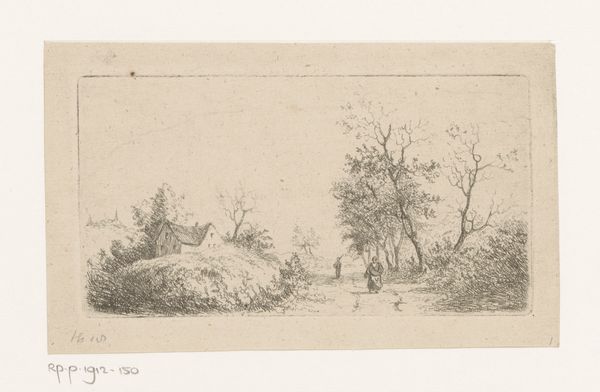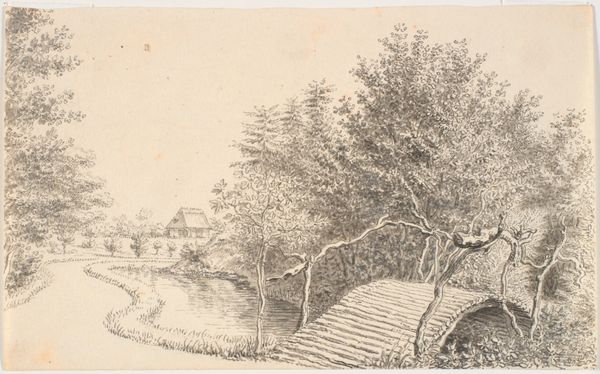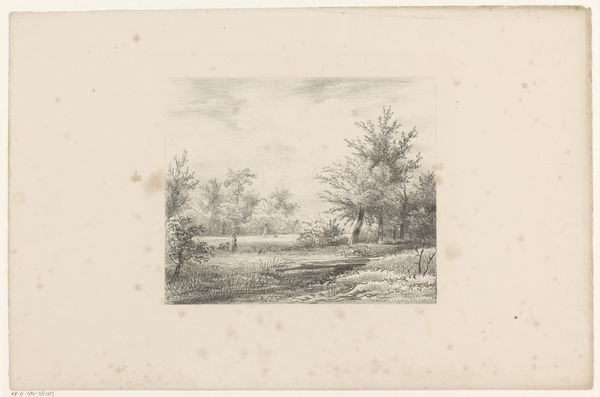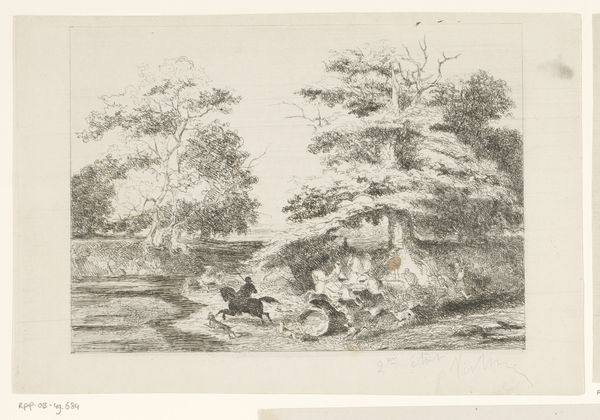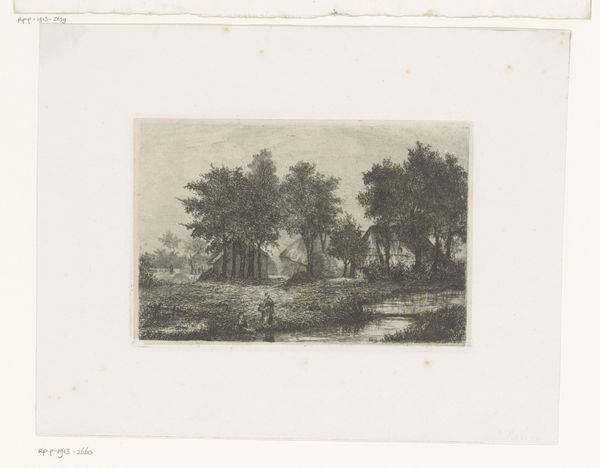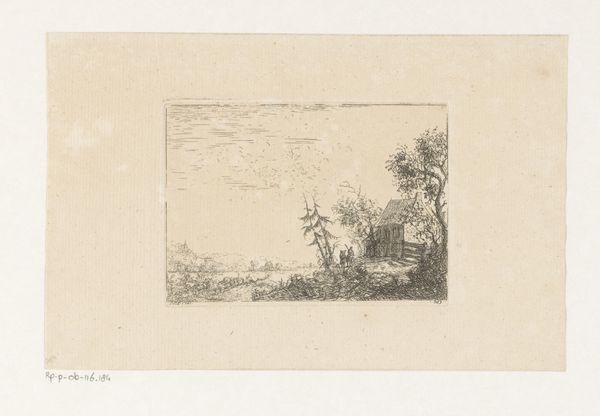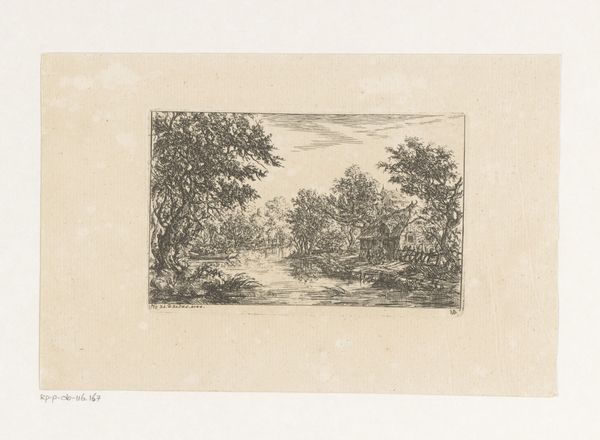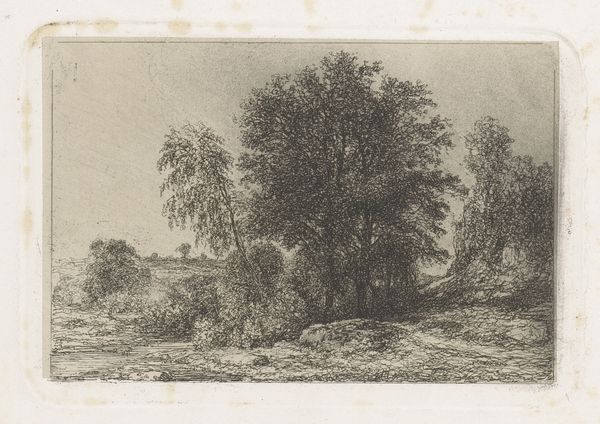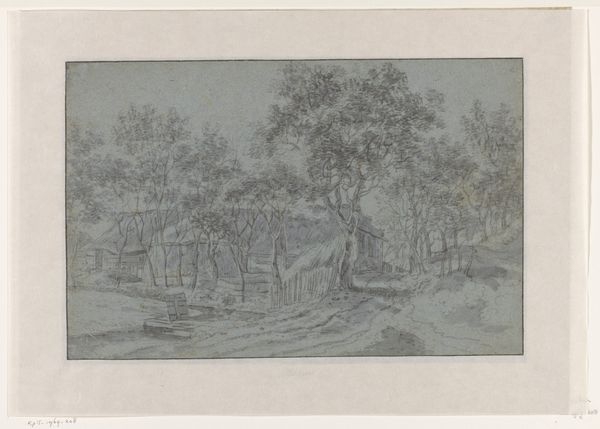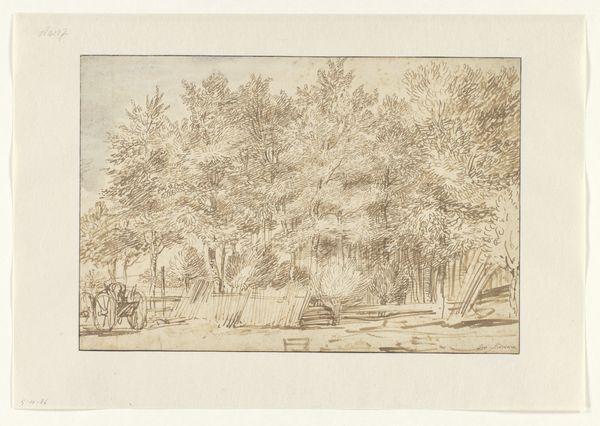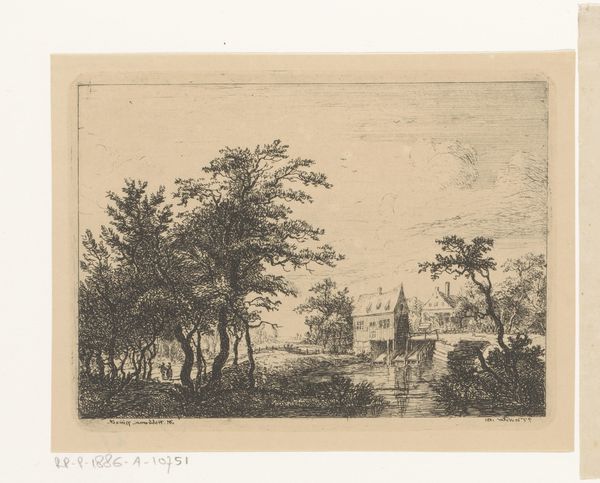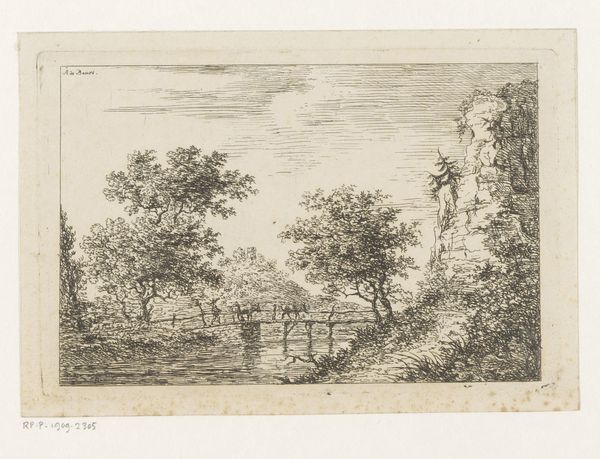
etching
#
etching
#
landscape
#
etching
#
romanticism
Dimensions: height 70 mm, width 132 mm
Copyright: Rijks Museum: Open Domain
Jean Théodore Joseph Linnig made this landscape near Ruisbroek using etching, a printmaking technique with a long and fascinating history. Etching involves coating a metal plate with a waxy, acid-resistant substance, then scratching an image into that coating. When the plate is dipped in acid, the exposed lines are eaten away. The deeper the bite, the more ink it holds, resulting in darker lines on the print. Look closely, and you can see how Linnig has used this to great effect, creating depth and shadow. The real skill here lies in controlling the acid and the pressure of the etching needle. It’s a highly skilled, labor-intensive process, traditionally associated with fine art, but with roots in industrial practices, like metalworking. By embracing this process, Linnig elevates the humble landscape, inviting us to appreciate not just the scene, but the artistry and effort behind its creation. This reminds us that even the simplest image carries a complex story of materials, making, and cultural value.
Comments
No comments
Be the first to comment and join the conversation on the ultimate creative platform.
